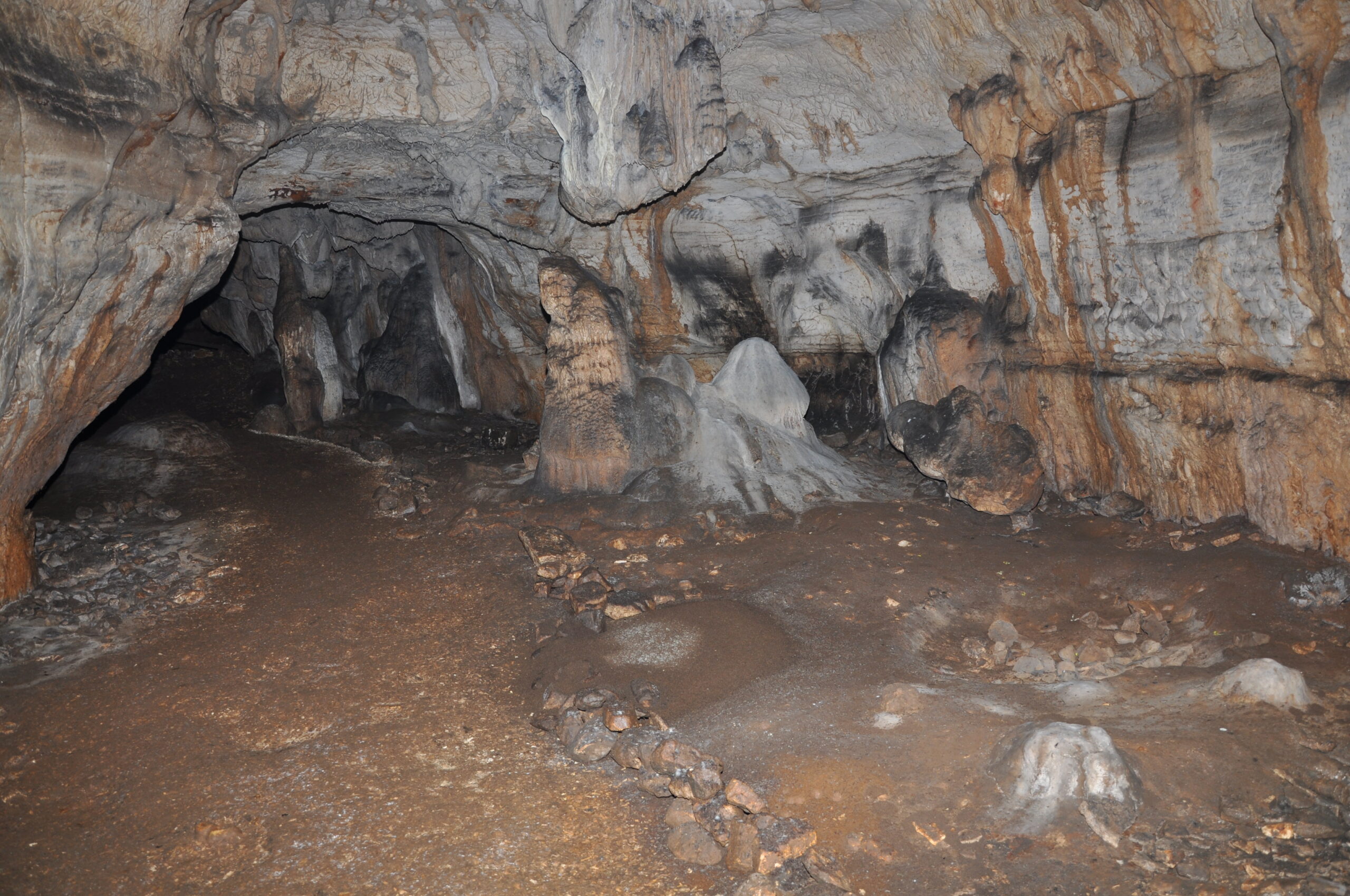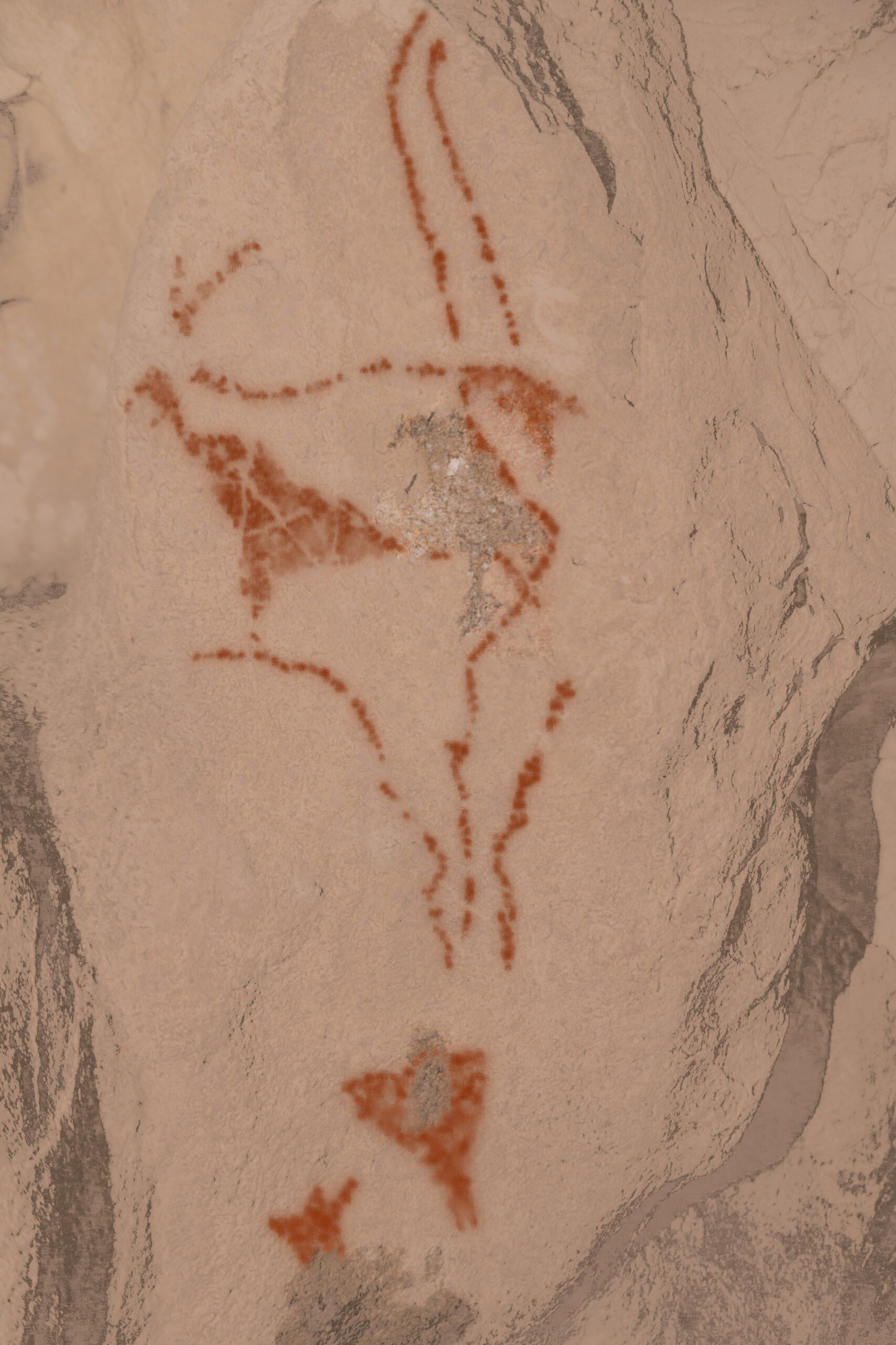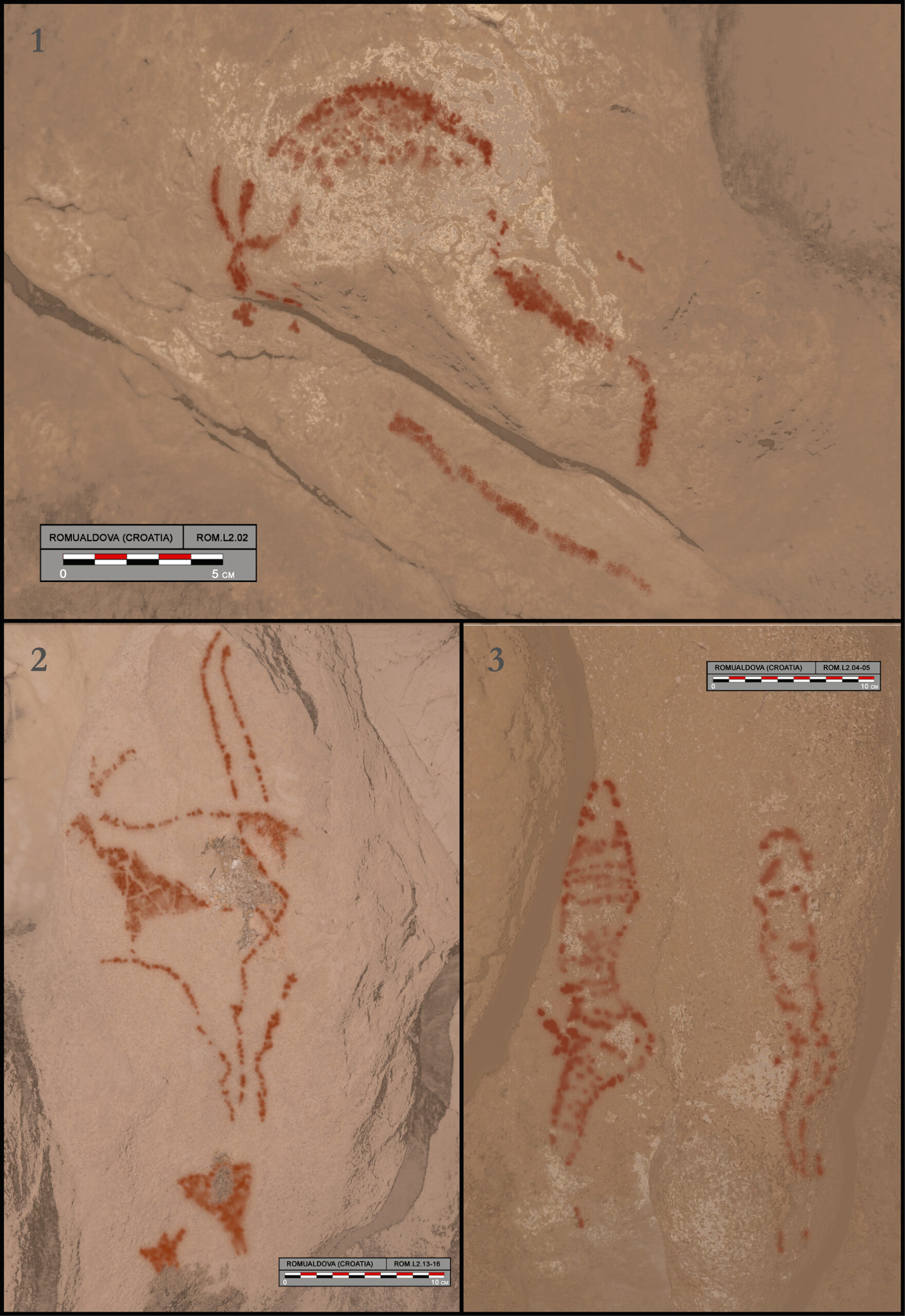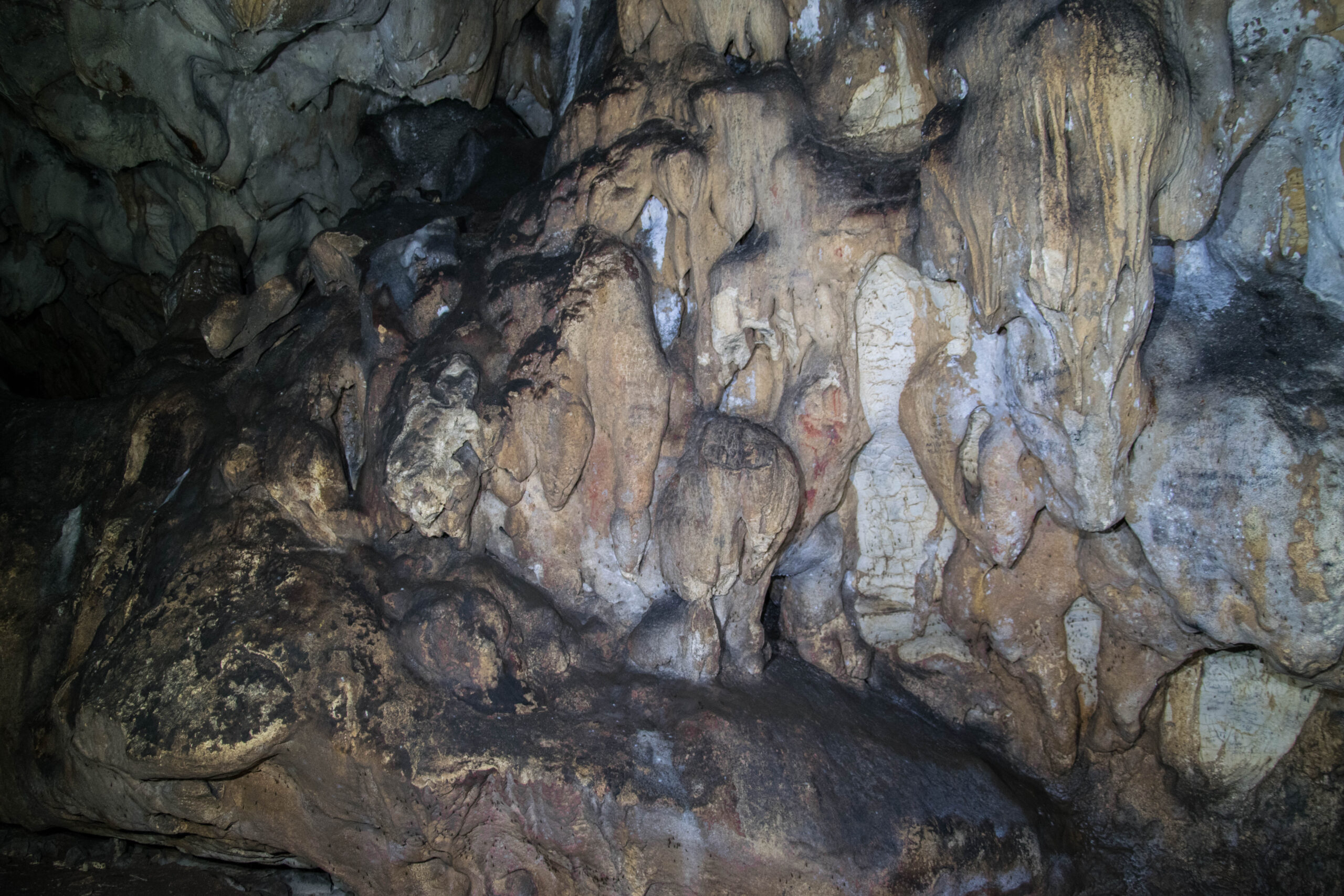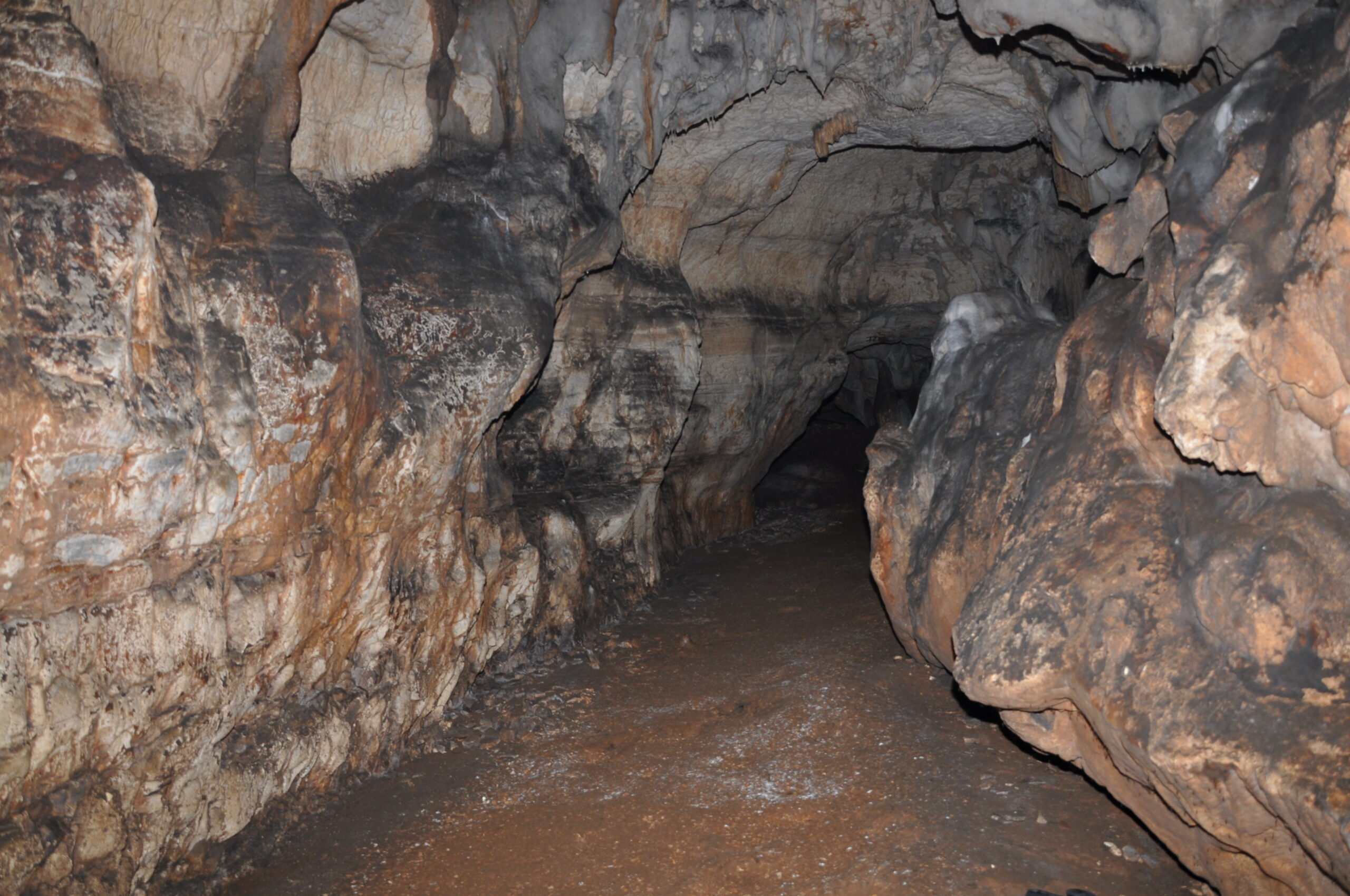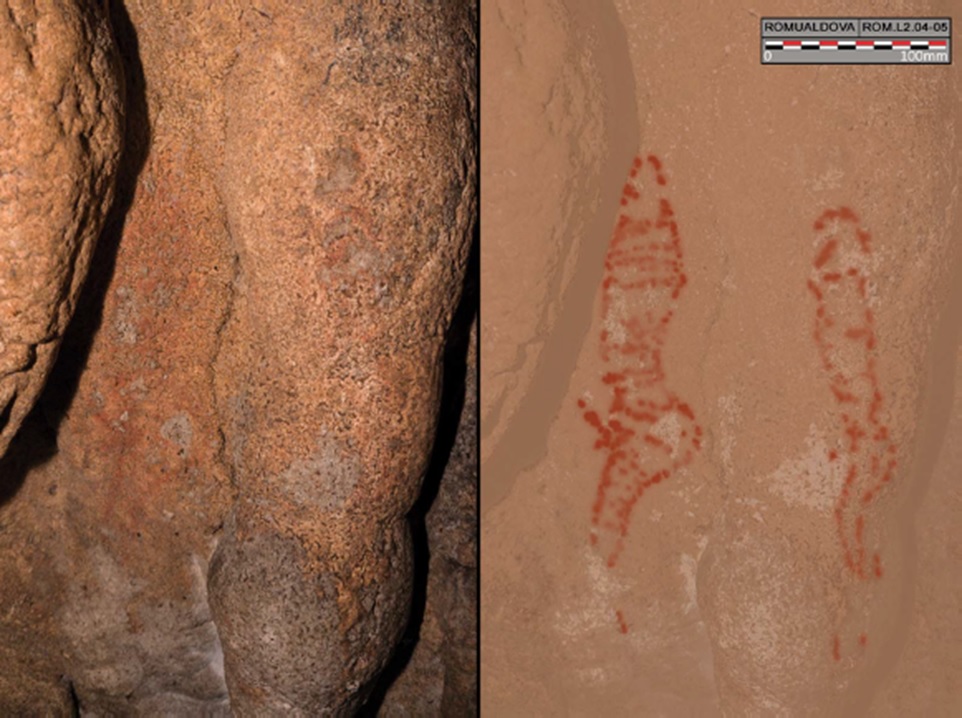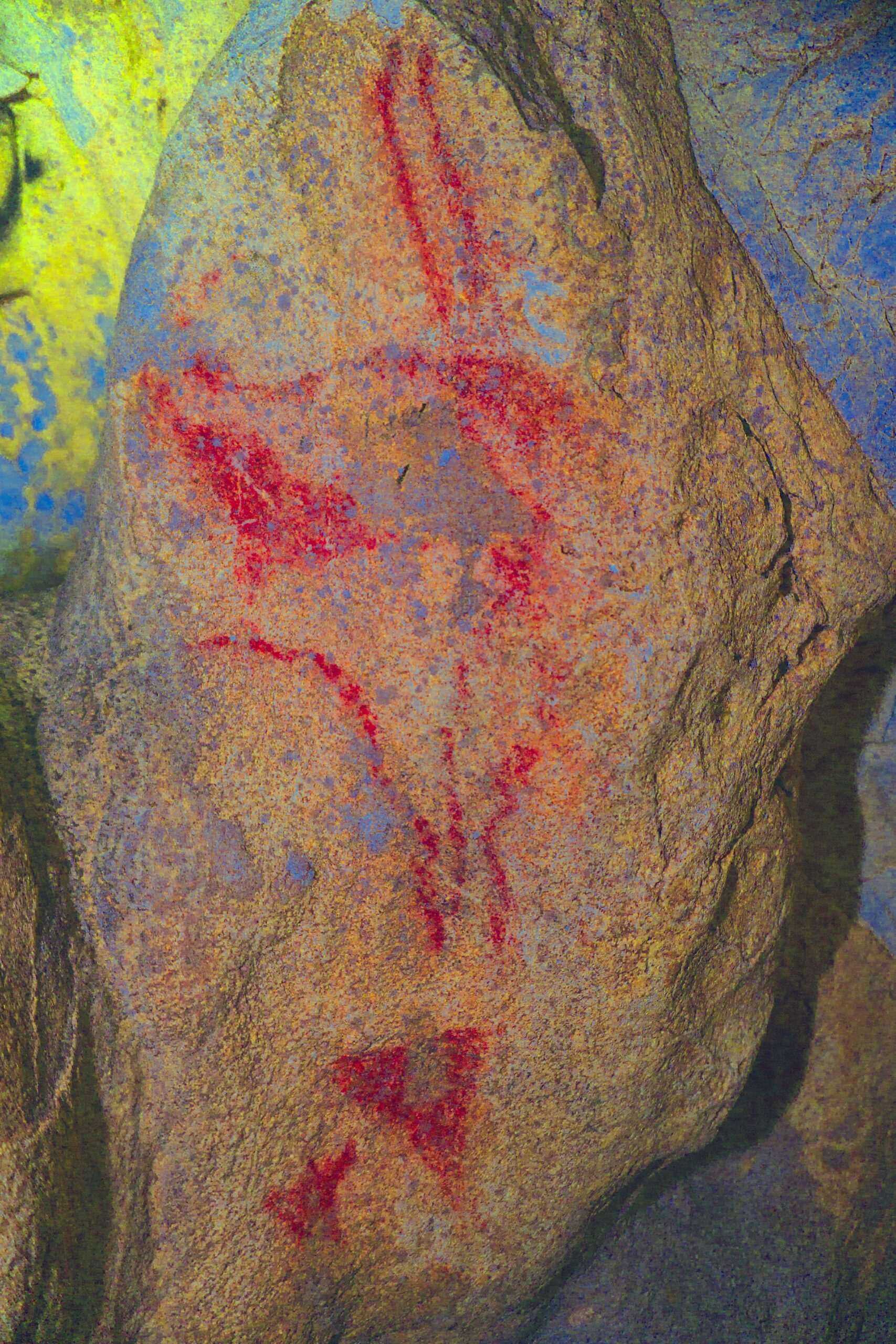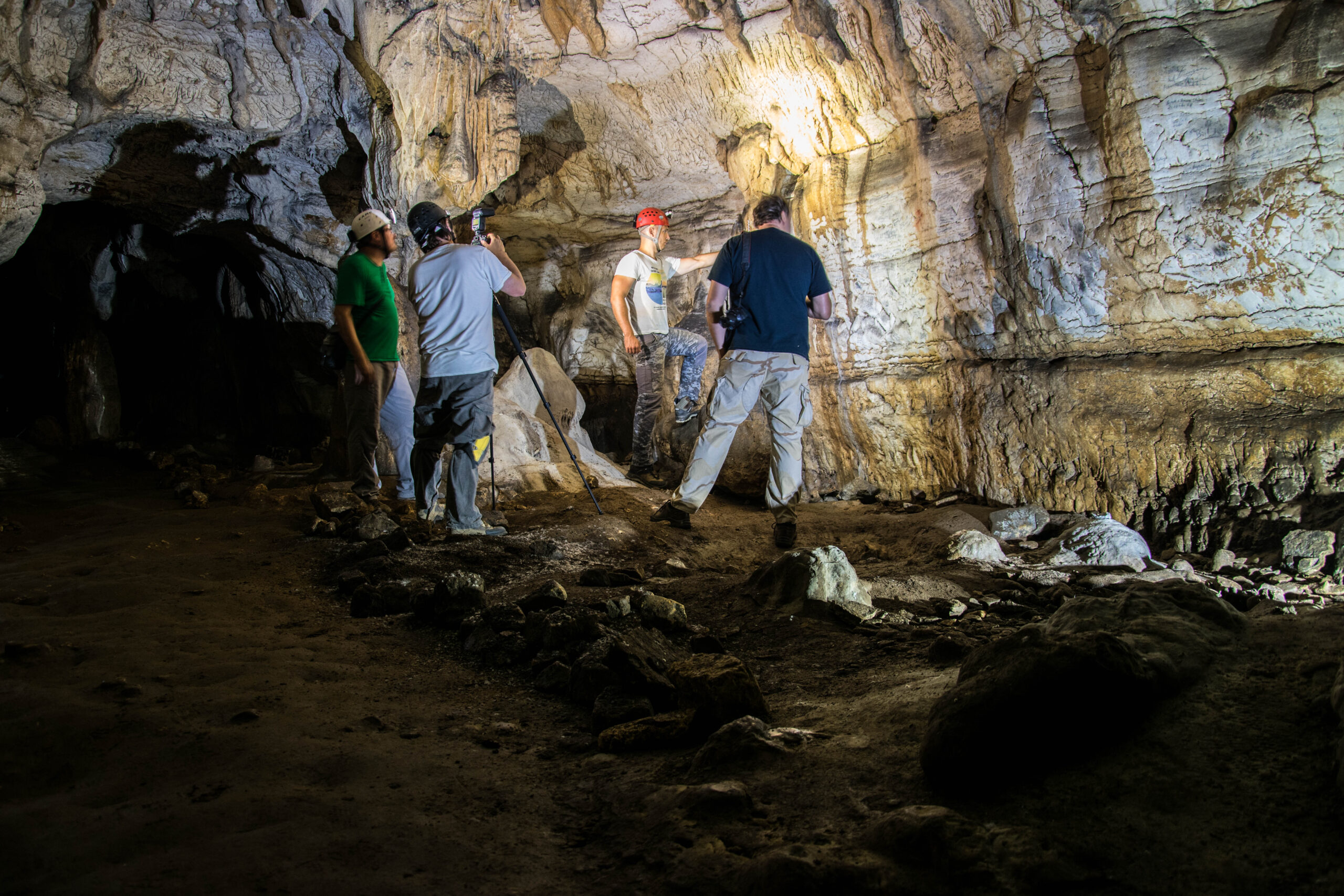Age of the artistic representations: Exploration of Romualdova cave’s walls has revealed a large decorated area located in the main corridor, between 32 and 46m back from the entrance. Here, 44 graphic units were identified, divided in four panels. Facing towards the back of the cave, the panels are located on both walls of the corridor: three (L1, L2 and L3) on the left side and one (R1) on the right. They were painted with red pigment; no prehistoric engravings or black paintings were found within the cave.
Most of the images are non-identifiable images, that are typically catalogued as isolated dots, lines and coloured marks. Other representations—eight in total comprise more complex motifs that we classify as ‘constructed signs’. We also identified two zoomorphic figures: a bison and an ibex. Finally, two graphic units are tentatively interpreted as anthropomorphic figures.
History of the site: Although several earlier researchers visited the site, noting remains from various archaeological periods, the cave itself wasknown to locals since the Middle Ages. According to legend, St. Romuald lived there for several years around year 1000 AD, giving the cave its name. The first systematic excavations at the site were conducted in the 1960s and 1970s by M. Malez. He found numerous remains of Pleistocene fauna (most abundant were the cave bear remains), and several lithic artifacts that he described as “younger Aurignacian and early Gravettian“, or that of the so-called “Perigordian complex“.
Later excavations by D. Komšo, and systematic work at the site by I. Janković confirmed that Upper Paleolithic hunter-gatherers occupied the site during at least two distinct times, i.e., the earlier and later phases of the Upper Paleolithic. Interestingly, in addition to the Upper Paleolithic habitation, lower layers yielded Mousterian finds, confirming that Neannertals also used the cave. Recent discovery of the first parietal cave art at Romualdova Pećina opened new questions related to the behavioral/symbolic aspects of Upper Paleolithic peoples in the region.










